Hellequin: Leader Of The Wild Hunt And Fairy King
Hellequin: leader of the Wild Hunt and Fairy King

The “familia Herlequini” or “la mesnie Hellequin” is a term which, as Claude Lecouteux has shown in “Phantom Armies of the Night”, might encompass a wide variety of disparate phenomena, such as the wild hunt (die wilde Jagt) and the wild horde (das wilde Heer). The familia Herlequini represented a troop of the dead: the earliest explicit reference to the familia Herlequini is in Orderic Vitalis’s Ecclesiastical History (1130s).
Orderic told the story of a Norman priest called Walchelin, who describes his encounter on New Year’s night in 1091 with a mysterious procession of knights, ladies, priests, monks, and commoners, “like the movement of a great army,” among whom he recognized “many of his neighbours who had recently died.” At one point Walchelin says to himself, “Haec sine dubio familia Herlechini est” [Without a doubt this is Herlequin’s household]. At one point Walchelin grabs one of their horses by the reins and experiences an intense burning, and at another, one of the knights seizes him by the throat, leaving a scar which he carries to the grave. All the members of the procession suffer penitential torments for their former sins: one of the knights, for instance, tells Walchelin: “The arms which we bear are red-hot, and offend us with an appalling stench, weighing us down with intolerable weight, and burning with everlasting fire”.
In this description, Herlechinus appears as a giant who raise a huge club.
The other early description of Herlequin’s ride, written some fifty years later, is from Walter Map’s “De Nugis Curialium”. Here a Welsh king called Herla encounters a diminutive Pan-like creature who predicts his future marriage and then strikes a bargain with him: he will attend Herla’s wedding on condition that the king help him celebrate his own wedding a year later. This creature, who is never named, turns out to be royal and shows up at Herla’s wedding with a splendid retinue bearing lavish gifts. The return visit, which involves passing through “a cave in a high cliff”, is equally successful, but when the time comes for him to leave, Herla’s host presents him with a small dog, with the instruction that none of his retinue is to dismount until the dog jumps down to the ground. He returns to his kingdom only to discover that hundreds of years have passed. Inevitably, some of his company dismount before the dog jumps down and are promptly turned to dust: “The King, comprehending the reason of their dissolution, warned the rest under pain of a like death not to touch the earth before the alighting of the dog. The dog has not yet alighted. And the story says that King Herla still holds on his mad course [circuitus vesanos] with his band in eternal wanderings, without stop or stay”. Later, Map refers to this band as “phalanges noctivage quas Herlethingi dicebant” [night-wandering battalions which they say are Herlething’s] or simply the “Herlethingi familia” [Herlething’s household].
Moreover, in a late thirteenth-century poem on confession, the priest is instructed to ask, “Creïs tu … / Ne [le luiton] ne la masnée / Herllequin, ne genes ne fees?” [Do you not believe … in the goblin, in the household of Herlequin, in witches, and fairies?], and an early fourteenth-century Dominican redaction of the Elucidarium, known as the Second Lucidaire, makes a similar association when it speaks (in the early sixteenth-century English translation) of “elues, gobelyns, & helquins þe whiche men se by nyght, as men of armes trottynge on horsebacke with grete assembles.” Another fourteenth-century author, Raoul de Presles, commenting on Augustine’s discussion of incubi demones in The City of God, recommends that his readers consult William of Auvergne on the topic, “and also he speaks in that place of Hellekin’s household and of Dame Habonde and of the spirits that they call fairies, which appear in stables and woods”. Finally, when the author of Richard the Redeless, referring no doubt to the duketti created by Richard II in 1397, writes, “Oþer hobbis Ϟe hadden / of Hurlewaynis kynne,” he explicitly associates Herlequin with hobs or fairies.
In Adam de la Halle’s brilliant farce “Le Jeu de la feuillée” (ca. 1255), the action of the play takes place in Arras on a feast day (perhaps May Day or possibly Midsummer’s Eve) and concerns a banquet held in honor of the fairies. The sound of bells leads a character called Gillot to anticipate the imminent arrival of “le maisnie Hellekin,” and when another character asks, “will the fairies be following him?” [venront dont les fees après], Gillot assures her that they will. In the event, Hellequin himself does not appear but later sends a messenger to Morgan (one of the three fairies who do) with a love letter; at first she spurns his offer, but after learning that her current beau, the Arrageois Robert Sommeillons, has been cheating on her, she regrets having rejected so peremptorily “the greatest prince in fairyland” [le graigneur / Prinche ki soit en faerie]. He is described, therefore, as a king and shown to be in some sense the leader of a fairy troupe.
How to start worshipping Hellequin?
See:
- https://elegantshapeshifter.tumblr.com/post/170758896566/historically-attested-offerings-for-the-major
- https://elegantshapeshifter.tumblr.com/post/171876985371/how-to-make-offerings-to-the-major-spirits-ie
- https://elegantshapeshifter.tumblr.com/post/171332375001/the-sabbath-or-ludus-bonae-societatis#notes
Sources:
- Richard Firth Green’s “Elf Queens and Holy Friars: Fairy Beliefs and the Medieval Church”
- Carlo Ginzburg’s “Ecstasies: Deciphering the Witches’ Sabbath” and “Night Battles: Witchcraft and Agrarian Cults in the Sixteenth and Seventeenth Centuries” - Jacob Grimm’s “Teutonic Mythology” - Claude Lecouteux’s “Phantom Armies of the Night: The Wild Hunt and the Ghostly Processions of the Undead” - Karl Meisen’s “Die Sagen vom wüttenden Heer und wilden Jäger” (paradoxically there is a translation in Italian but not in English) - Wolfgang Behringer’s “Shaman of Oberstdorf: Chonrad Stoeckhlin and the Phantoms of the Night” - Emma Wilby’s “Burchard’s strigae, the Witches’ Sabbath, and Shamanistic Cannibalism in Early Modern Europe”, “Cunning-Folk and Familiar Spirits” and “The Visions of Isobel Gowdie” - Eva Pocs’s “Between the Living and the Dead”, “Fairies and Witches at the Boundary of South-Eastern and Central Europe” and “Traces of Indo-European Shamanism in South East Europe”.
More Posts from Saintedsorcery and Others


it is so wild to me the fashions that are called “emo” today. especially given the fact that probably 80-90% of it is actually scene, not emo. this would have started full on wars 15 years ago
In modern Heathenry there is a concept of spirits known as the Disir (singular Dis). While there is some debate on the true origins of these spirits, it’s a common belief among todays Heathens that these are female ancestral guardians. I personally equate these spirits with The Mothers in Fayerie Traditionalism, those femme spirits that serve The Great Mother.
There are two modern festival/feast days associated with them: Mother’s Night, and Disablot.
But why not today? Why not Mothers Day? Today is a day that we celebrate the mothers of our respective families (blood and chosen) Today is a modern festival to venerate those enfleshed Matriarchs that we love and hold dear. To me it would make sense to extend that love and devotion to the Mothers that walk with us in the Unseen. Just sort of wondering out loud I suppose. I think in the future I might set aside time to honour all the Mothers in my life, Seen and Unseen.
Ukrainian folk haircare minute with Red: if you wish your hair to grow long, as you comb it, whisper, "Grow as long as water, as quickly as grass".

Agrippa ~ Of the seals, and characters of natural things.
Everything therefore hath its character pressed upon it by its star for some peculiar effect, especially by that star which doth principally govern it: and these characters contain, and retain in them the peculiar natures, virtues and roots of their stars ….


Art Of Maquenda, Dukkha Lustre
Diy Scrying Ball
I’ve been waiting since last Christmas for my local Dollar Tree to stock the diy snow globes so I could put my master plan into action. The time has finally come!
Last year I created this:

Now I’m gonna step it up a notch and create this:

Lets go!
Materials:

Diy Globe kit
Sparkle glue or Sparkles and Veg Glycerin
Waterproof LED Tea lights
(not pictured)
a drill
a hot glue gun
food coloring
rubbing alcohol or hand sanitizer
Bowl
something to stir with
Instructions


so you’re gonna separate the kit into all its parts and then drill a hole into the lid smaller than the bulb of the tealight.


Slowly push the bulb through the hole to open it up, then take it out, hot-glue the area around the bulb then slide it back in, once its in give it a thin layer of hot glue over where the bulb protrudes. Test that the light still works and will fit into the base without issue.

move to a sink, place the globe into a bowl and add some water and color (best to mix the food coloring in water then add to globe)


add in your alcohol, glitter and glycerin (or glitter glue), then top it off with water put back on the bottom.
That’s it!
Happy Scrying
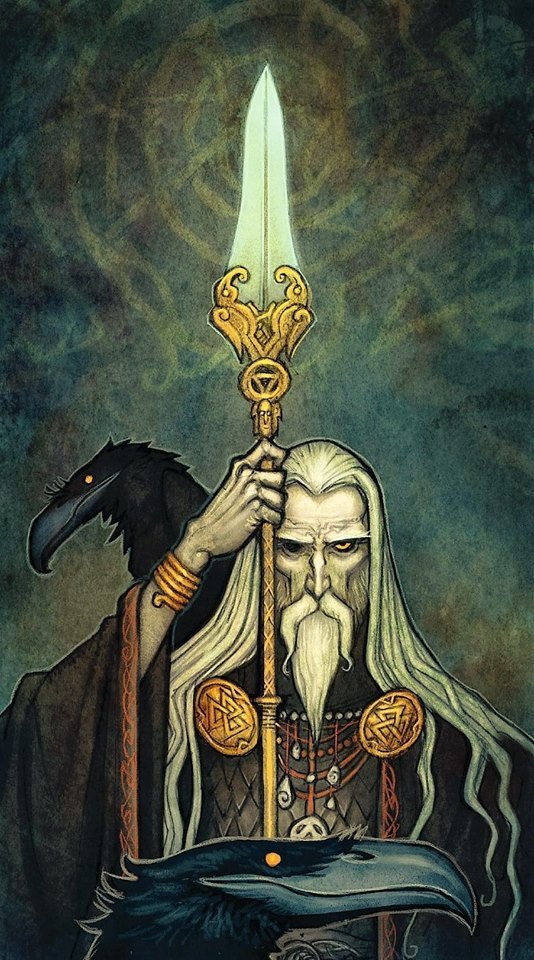
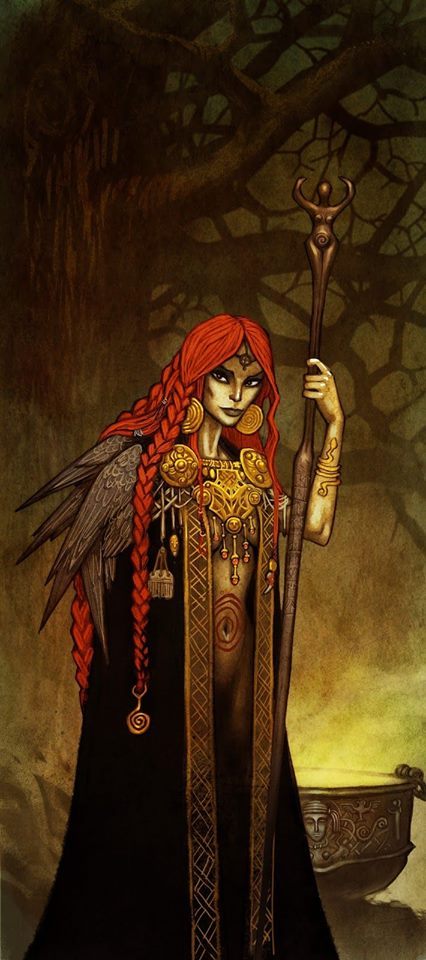




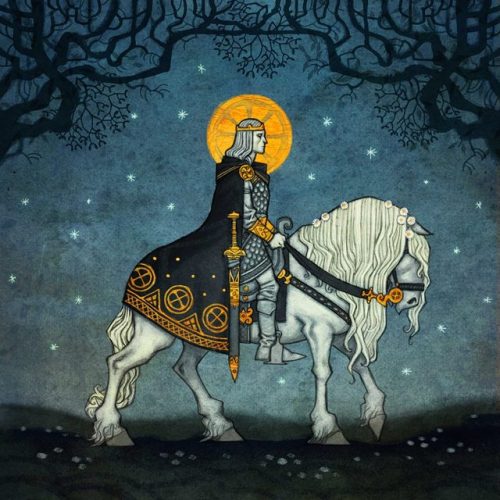
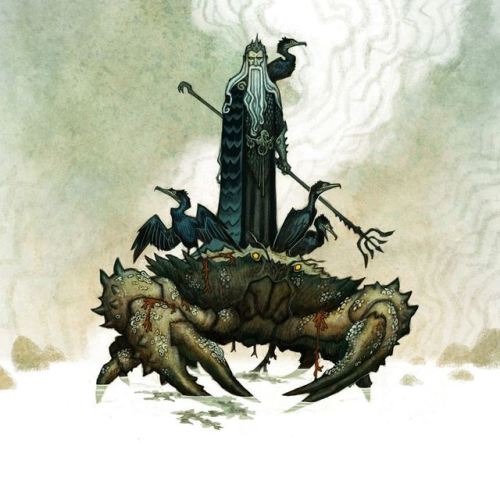
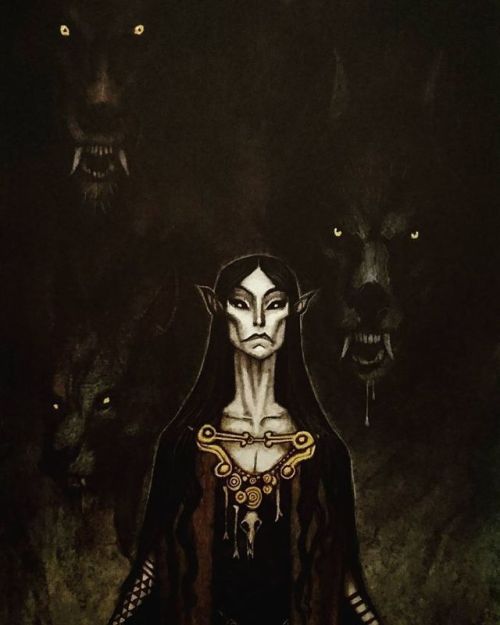
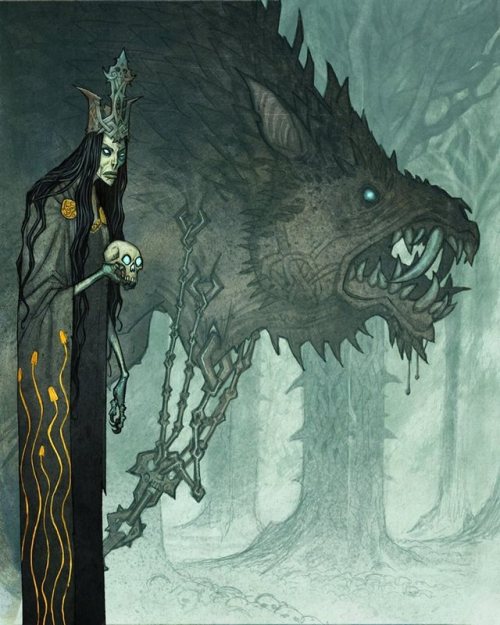
Wodan, Freyja, Donar, Frey, Tyr, Loki, Baldr, Njord, Angrboda and Hel.
Artist: Johan Egerkrans
Traditional Ways to become a Sorcerer
Having the Gift
The Second Sight, Varm Hander (warm hands, healing hands), or diviner. Usually inherited from a family member or a past ancestor.
Acquiring the Gift
Given to the practitioner by the spirits, by hugging a tree in which a cuckoo sings, touching or eating a white snake, touching the death shroud of a child, or sleeping under a coffin in which a dead person is displayed.
Utesittning (sitting outside)
This may be sitting out in a cemetery, sitting at a crossroads, walking around a church three times and then sitting on the steps, going out in the forest and waiting for the forest spirits to teach you.
Learning from a Teacher
This relates to the passing on of power. In Scotland, Faery Seers would pass on the power by placing one hand atop the initiate’s head, and another below their feet while the initiate stepped on the Seer’s left foot and looked over their right shoulder. It is said that the a teacher should not teach anyone older than themselves, and that if they teach a charm or rune, they will lose their power over that incantation forever. Also joining a secret society, like the Horseman’s Word.
Standing outside of Society and the Church
This involves renouncing one’s baptism, staying away from society, becoming “violent” or wild. In one ritual, a seeker of magic would take scrapings from a church bell to a deep lake. There, they would cast the scrapings into the lake saying: “As far as these scrapings are from the bell, so too shall I be far from God.” And walk away without looking back.
Having and learning from a Blackbook.
Owning and learning from a Blackbook, or Svartebok, was another way to gain mastery over magic. This book may be given by the Devil or some other spirit at a crossroads or in a graveyard. It may be given by a teacher. Or it may be dictated by the spirits in spirit trance.
The Toad Bone Rite
Crucifying a toad upon a tree, then collecting its bones from an anthill. One of the bones would float upon throwing them into the river. The seeker would then fight with the Devil over possession of the bone. Should the seeker succeed, then they would have power over man and beast.
-
 satimoro liked this · 2 months ago
satimoro liked this · 2 months ago -
 likethestars-chasethesun reblogged this · 6 months ago
likethestars-chasethesun reblogged this · 6 months ago -
 thelovelygods liked this · 7 months ago
thelovelygods liked this · 7 months ago -
 cotrieu liked this · 8 months ago
cotrieu liked this · 8 months ago -
 mairimccarter reblogged this · 1 year ago
mairimccarter reblogged this · 1 year ago -
 jimmysgay reblogged this · 2 years ago
jimmysgay reblogged this · 2 years ago -
 jimmysgay liked this · 2 years ago
jimmysgay liked this · 2 years ago -
 rookthebird liked this · 2 years ago
rookthebird liked this · 2 years ago -
 nocturnvs liked this · 2 years ago
nocturnvs liked this · 2 years ago -
 monsoonceroom liked this · 3 years ago
monsoonceroom liked this · 3 years ago -
 refer12 reblogged this · 3 years ago
refer12 reblogged this · 3 years ago -
 refer12 liked this · 3 years ago
refer12 liked this · 3 years ago -
 imperiumalbion liked this · 3 years ago
imperiumalbion liked this · 3 years ago -
 postapocalypticeconomy-blog reblogged this · 3 years ago
postapocalypticeconomy-blog reblogged this · 3 years ago -
 postapocalypticeconomy-blog liked this · 3 years ago
postapocalypticeconomy-blog liked this · 3 years ago -
 apdistractions liked this · 3 years ago
apdistractions liked this · 3 years ago -
 jeremijujushop reblogged this · 3 years ago
jeremijujushop reblogged this · 3 years ago -
 wyzper317 liked this · 3 years ago
wyzper317 liked this · 3 years ago -
 vine-black reblogged this · 3 years ago
vine-black reblogged this · 3 years ago -
 blood-thorned-wood reblogged this · 3 years ago
blood-thorned-wood reblogged this · 3 years ago -
 essie-essex reblogged this · 3 years ago
essie-essex reblogged this · 3 years ago -
 essie-essex liked this · 3 years ago
essie-essex liked this · 3 years ago -
 rockflowerwitch reblogged this · 3 years ago
rockflowerwitch reblogged this · 3 years ago -
 rockflowerwitch liked this · 3 years ago
rockflowerwitch liked this · 3 years ago -
 zarya-zaryanitsa liked this · 3 years ago
zarya-zaryanitsa liked this · 3 years ago -
 madlyranwitch reblogged this · 3 years ago
madlyranwitch reblogged this · 3 years ago -
 plantwitch liked this · 3 years ago
plantwitch liked this · 3 years ago -
 oldonesorceress reblogged this · 3 years ago
oldonesorceress reblogged this · 3 years ago -
 oldonesorceress liked this · 3 years ago
oldonesorceress liked this · 3 years ago -
 vine-black liked this · 3 years ago
vine-black liked this · 3 years ago -
 delphikahini liked this · 3 years ago
delphikahini liked this · 3 years ago -
 eldritchhousekeeper liked this · 3 years ago
eldritchhousekeeper liked this · 3 years ago -
 kaoticfabel liked this · 4 years ago
kaoticfabel liked this · 4 years ago -
 saintedsorcery reblogged this · 4 years ago
saintedsorcery reblogged this · 4 years ago -
 saintedsorcery liked this · 4 years ago
saintedsorcery liked this · 4 years ago -
 psage liked this · 4 years ago
psage liked this · 4 years ago -
 markolav liked this · 4 years ago
markolav liked this · 4 years ago -
 stormcrow513 liked this · 4 years ago
stormcrow513 liked this · 4 years ago -
 thelucentsteed liked this · 4 years ago
thelucentsteed liked this · 4 years ago -
 loiteog liked this · 4 years ago
loiteog liked this · 4 years ago -
 forbidden-sorcery liked this · 4 years ago
forbidden-sorcery liked this · 4 years ago -
 wicked-witch13 reblogged this · 4 years ago
wicked-witch13 reblogged this · 4 years ago -
 wicked-witch13 liked this · 4 years ago
wicked-witch13 liked this · 4 years ago -
 echoesofthefall liked this · 4 years ago
echoesofthefall liked this · 4 years ago
